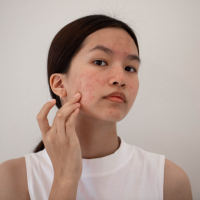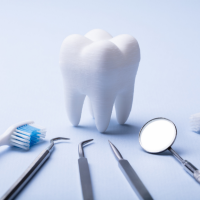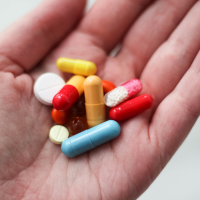Sterile Compounding
Women’s Health
Men’s Health
Derm and Med Spa
Weight loss
Ear, Nose and Throat
Dental
Pain Management
And More..
What is Sterile Compounding?
Sterile compounding refers to the process of preparing customized medications in a sterile environment to ensure their safety and efficacy. It involves the careful and precise mixing, measuring, and packaging of medications that are typically administered through injections, intravenous (IV) infusions, or other sterile routes.
Sterile compounding is necessary when commercially available medications do not meet the specific needs of a patient, such as requiring a different dosage, combination of ingredients, or avoiding allergens. It is commonly practiced in hospitals, compounding pharmacies, and other healthcare settings.
The process of sterile compounding follows strict guidelines and regulations to minimize the risk of contamination and ensure the production of sterile medications. This includes maintaining a sterile environment using a laminar airflow hood or isolator, wearing appropriate personal protective equipment (PPE) such as sterile gowns, gloves, and masks, and employing aseptic techniques to prevent microbial contamination.
Sterile compounding involves the use of sterile ingredients, such as sterile powders, liquids, or solutions, which are measured, mixed, and prepared according to a prescribed formulation. Sterilization techniques, such as filtration or autoclaving, may be used to ensure the final product is free from microorganisms.
The compounded sterile medications are typically packaged in sterile vials, syringes, or IV bags and labeled with relevant information, including the patient’s name, medication name, dosage, and expiration date.
Sterile compounding plays a vital role in providing customized medications to patients with unique needs, such as those requiring intravenous antibiotics, chemotherapy drugs, or other sterile medications that cannot be obtained commercially. It requires specialized training, expertise, and adherence to strict quality control measures to ensure patient safety.
Non-sterile vs. Sterile Compounding
Sterile Compounding:
Sterile compounding, as explained earlier, involves the preparation of medications in a sterile environment to ensure the absence of microorganisms. Sterile compounding is necessary when medications are intended for administration through sterile routes, such as injections, intravenous infusions, or eye drops.
Sterile compounding is performed in specialized environments, such as cleanrooms or sterile compounding facilities, equipped with laminar airflow hoods or isolators. The compounding personnel wear sterile gowns, gloves, masks, and head covers to maintain aseptic conditions and prevent contamination.
Strict aseptic techniques are followed during sterile compounding to minimize the introduction of microorganisms. Sterile ingredients are used, and sterilization techniques like filtration or autoclaving may be employed to ensure the final product is free from contaminants.
Sterile compounding also involves additional quality control measures, such as regular testing of environmental and personnel samples, verification of sterility through microbial testing, and proper labeling and packaging of sterile medications.
The regulations and standards for sterile compounding are more stringent compared to non-sterile compounding due to the critical nature of sterile medications and the increased risk of patient harm from contaminated products.
Non-Sterile Compounding:
Non-sterile compounding refers to the preparation of medications in a non-sterile environment, typically in a compounding pharmacy or other healthcare settings. Non-sterile compounding involves manipulating medications that are not intended for sterile administration, such as oral capsules, creams, ointments, suppositories, and transdermal patches.
Non-sterile compounding may involve activities like measuring, mixing, grinding, and encapsulating medications to create customized formulations for individual patients. However, the final products are not required to be sterile because they are intended for non-sterile administration routes, such as oral ingestion or topical application.
Non-sterile compounding still requires adherence to good compounding practices and regulations to maintain product quality, accuracy, and safety. This includes appropriate handling of ingredients, proper documentation, quality control measures, and labeling of compounded medications.
Regulations and Best Practices
Sterile compounding is subject to various regulations and best practices to ensure patient safety and maintain the integrity of compounded sterile medications. Here are some key regulations and best practices associated with sterile compounding:
United States Pharmacopeia (USP) Chapters <797> and <800>: These are standards developed by the USP that provide guidelines for compounding sterile preparations and handling hazardous drugs, respectively. USP Chapter <797> covers requirements for compounding sterile preparations, including personnel training, environmental monitoring, facility design, and quality control. USP Chapter <800> focuses on the safe handling of hazardous drugs, including proper compounding procedures, containment, and personal protective equipment.
Regulatory Authorities: In the United States, sterile compounding is regulated by various authorities, including the Food and Drug Administration (FDA) and state boards of pharmacy. These entities enforce regulations, conduct inspections, and ensure compliance with applicable standards.
Facility Design and Environmental Control: The physical layout of a sterile compounding facility should be designed to minimize the risk of contamination. This includes appropriate segregation of areas, controlled air quality (HEPA filtration), positive pressure differentials, and regular cleaning and maintenance.
Personnel Training and Competency: Compounding personnel involved in sterile compounding should receive specialized training on aseptic techniques, proper gowning and gloving, cleaning and disinfection procedures, and handling of hazardous drugs. Ongoing competency assessments and continuing education are also important.
Quality Assurance: Robust quality assurance programs should be in place to monitor and verify the quality and safety of compounded sterile medications. This includes regular environmental monitoring (air and surface sampling), testing of finished products for sterility, potency, and endotoxin levels, and tracking of adverse events or product recalls.
Standard Operating Procedures (SOPs): Detailed SOPs should be developed and followed for all aspects of sterile compounding, including equipment use and maintenance, cleaning protocols, compounding procedures, labeling, packaging, and storage.
Documentation and Record-Keeping: Accurate and comprehensive documentation is essential in sterile compounding. This includes recording ingredients, compounding procedures, equipment maintenance, environmental monitoring results, personnel training records, and batch-specific information.
Risk Assessment and Mitigation: Regular risk assessments should be conducted to identify potential hazards and vulnerabilities in the sterile compounding process. Mitigation strategies, such as process improvements, staff training, and technology upgrades, should be implemented to minimize risks.
Validation and Verification: Processes, equipment, and personnel should undergo validation and verification to ensure they meet the required standards. This includes validation of aseptic processes, equipment calibration, and periodic requalification.
Continuous Improvement: Sterile compounding practices should be continuously evaluated and improved based on new evidence, emerging technologies, and lessons learned from incidents or near-misses.
It is important for healthcare facilities and compounding pharmacies to stay updated with the latest regulations, guidelines, and best practices related to sterile compounding to ensure the highest standards of patient care and safety.








